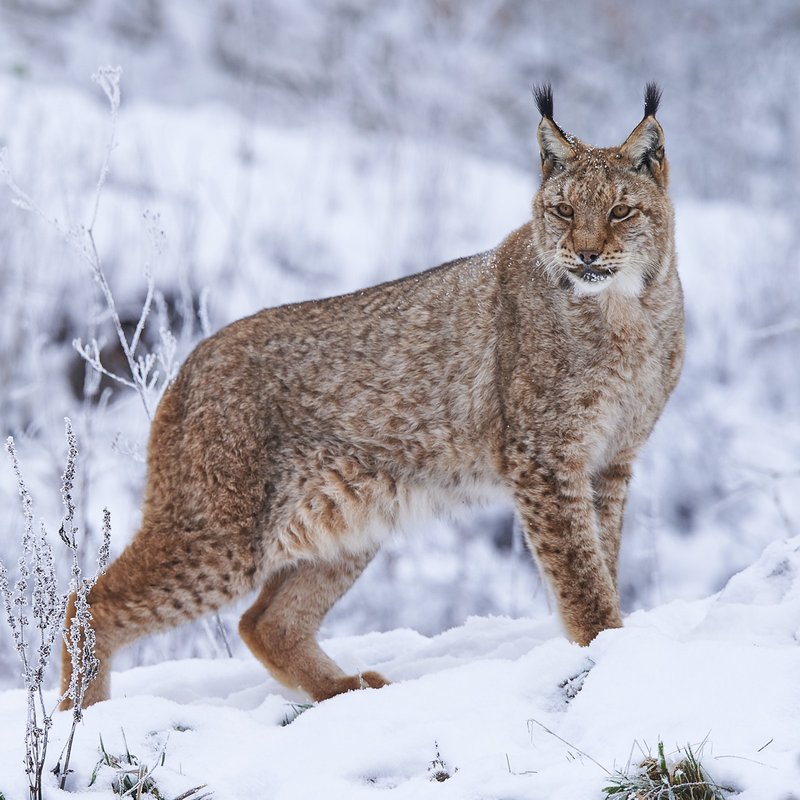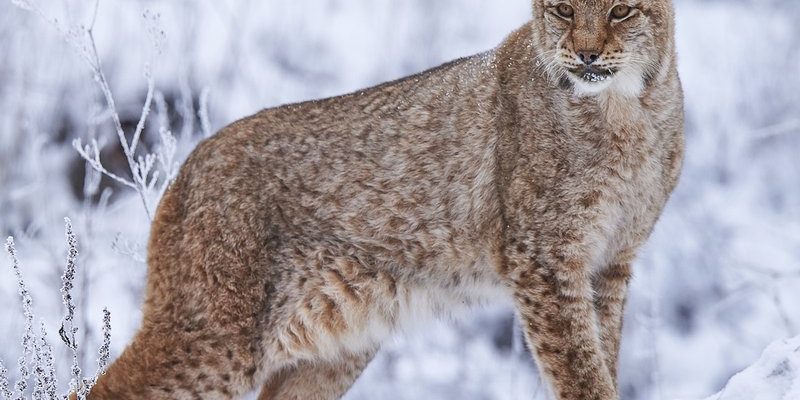
These cats are not just survivors; they’re specialists. From their powerful limbs to their keen sense of hearing, each trait has been honed to meet the challenges of their environment. Imagine living in a place where temperatures can plummet and food becomes scarce—how do these lynxes manage? Let’s explore their incredible adaptations that allow them to thrive even in the harshest climates.
The Power of Camouflage
One of the first things you’ll notice about the Eurasian lynx is its stunning coat, a blend of tawny, brown, and gray hues. This isn’t just for looks; it’s a clever form of camouflage. Their fur helps them blend seamlessly into their surroundings, whether it’s the dappled light of a forest or the snowy landscapes in winter.
During the colder months, their coat becomes thicker and longer, providing essential insulation against freezing temperatures. The fur on their paws grows in tufts, which helps them walk on snow without sinking. You might be wondering how effective this really is. Well, lynxes can travel in deep snow without losing their footing, enabling them to hunt more effectively.
This ability to camouflage isn’t just about avoiding predators; it’s also a hunting strategy. By staying hidden, lynxes can stalk their prey—like hares and small deer—without being detected. When the time is right, they pounce swiftly, using their powerful hind legs. This combination of stealth and strength is key to their survival.
Diet and Hunting Skills
Speaking of hunting, the Eurasian lynx is a skilled predator. Their diet primarily consists of small to medium-sized mammals. This includes hares, rodents, and even young deer. But what makes their hunting method fascinating is their adaptability.
In areas where prey is scarce, lynxes can adjust their diet to include birds or even insects. They have sharp retractable claws and excellent night vision, which allows them to hunt effectively in low-light conditions. Imagine trying to catch your dinner in the dark—lynxes have that down to an art!
Additionally, they often rely on their keen sense of hearing to locate prey. Their ears are tufted, which isn’t just for looks; it helps amplify sounds. This means they can hear the slightest rustle, giving them an edge when tracking down a meal.
Territorial Behavior and Range
Eurasian lynxes are known for their territorial nature. Each lynx claims a specific area, which can range from 20 to 500 square kilometers, depending on the availability of food and the density of the population. This territorial behavior is crucial for their survival, as it ensures they have enough resources to thrive.
You might be wondering how they communicate with one another. Lynxes use a range of vocalizations, including growls, hisses, and even yowls, to mark their territory or attract a mate. They also leave scent marks on trees and bushes, which helps define their area and keep rivals at bay.
During mating season, which typically occurs in late winter, these cats become even more vocal as they seek out partners. Once a female has mated, she’ll usually give birth to 2-4 kittens in a den, ensuring the next generation is well-equipped for the challenges of their environment.
Adaptations to Extreme Weather
Living in harsh climates requires some serious survival skills. The Eurasian lynx has several adaptations that help them cope with extreme weather conditions. In winter, temperatures can drop dramatically, but these cats are built to handle it. Their thick fur acts as insulation, while their body fat provides additional warmth.
During heavy snowfall, lynxes will often reduce their activity, conserving energy for when they truly need to hunt. They can rely on their stored energy for several days if food becomes scarce. However, when they do venture out, they are agile and quick, darting through snow to catch unsuspecting prey.
In summer, their fur sheds to a lighter coat, allowing them to adapt to the warmer temperatures. This transition is crucial; without it, they could become overheated. The lynx’s ability to adapt to both cold and warm weather showcases their resilience and flexibility in the face of environmental changes.
The Importance of Conservation
Unfortunately, the Eurasian lynx faces threats from habitat loss and hunting. As humans expand into natural areas, these majestic creatures lose their homes and food sources. Conservation efforts are vital to ensure that lynxes can continue to thrive in their natural habitats.
Several organizations are working to protect lynxes through habitat restoration, laws against poaching, and creating wildlife corridors to connect fragmented habitats. By raising awareness about their plight, we can help secure a future for these incredible animals.
Supporting conservation efforts not only helps lynxes but also maintains the health of entire ecosystems. When predators like the lynx thrive, it indicates a balanced environment. So, by looking out for these magnificent cats, we’re also looking out for the forests and lands they inhabit.
The Eurasian lynx is a remarkable example of survival against the odds. Through their stunning adaptations, from camouflage to hunting strategies, they navigate the challenges of harsh environments with grace and skill. Their ability to thrive in extreme weather showcases not just their physical resilience, but also the incredible ingenuity of nature.
As we learn more about these fascinating creatures, it’s clear that their survival hinges on our willingness to protect their habitats. By supporting conservation efforts and advocating for these animals, we can ensure that future generations will have the chance to marvel at the beauty and strength of the Eurasian lynx. They remind us that even in the toughest of environments, life finds a way to persevere.

